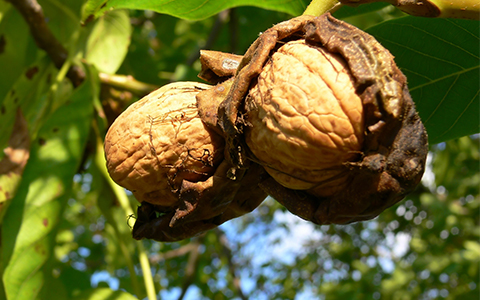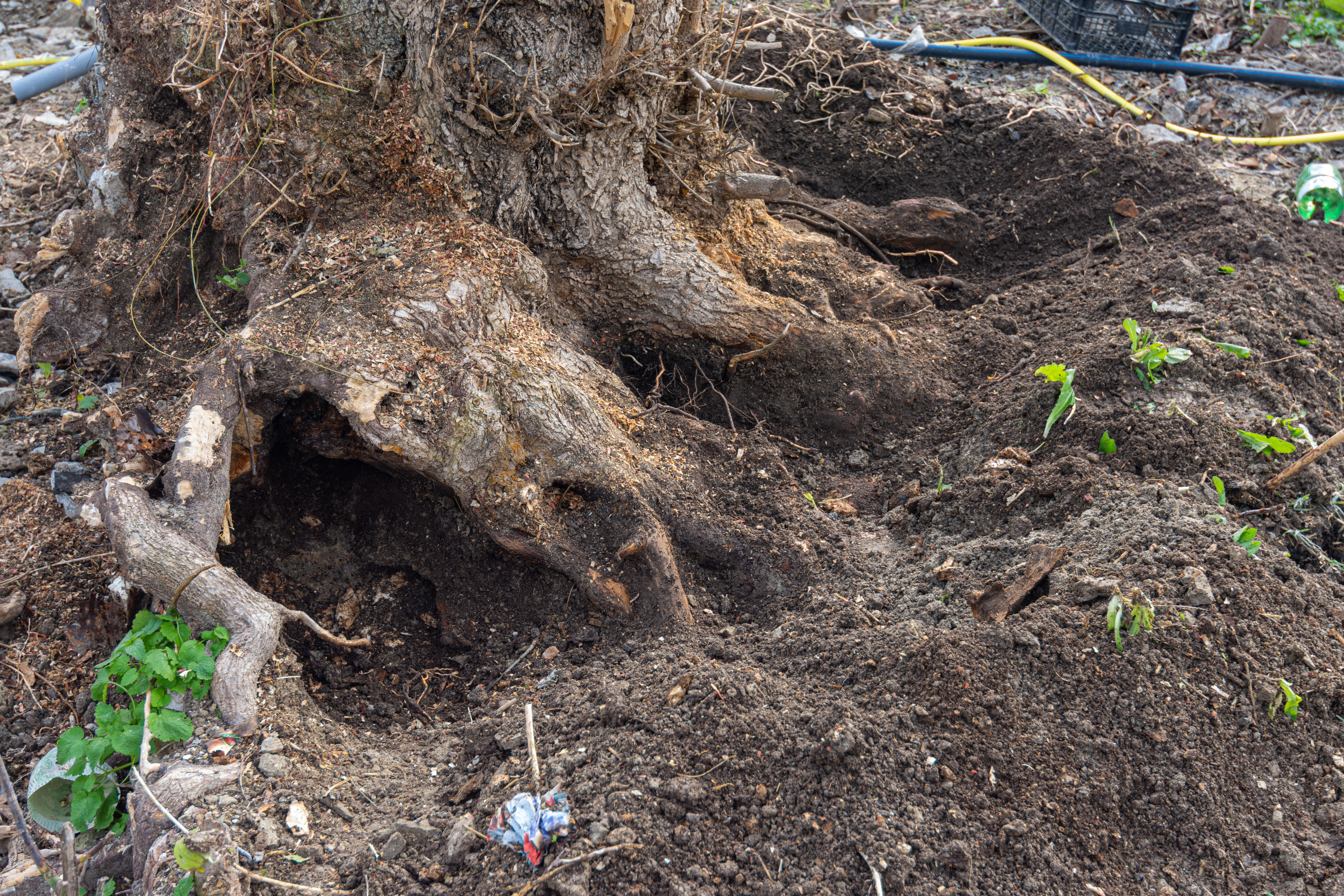Notice: Undefined variable: page in /home/vrxdg1855sn3/public_html/wp-content/themes/72tree/content.php on line 15
Notice: Trying to get property 'ID' of non-object in /home/vrxdg1855sn3/public_html/wp-content/themes/72tree/content.php on line 15
How To Mitigate Landscape Problems Caused by Juglone

Prevent your landscaping and gardens from mysteriously dying shortly after planting them. Knowing what may be lurking beneath your soil will help you select more appropriate trees, grass, and plant species for your planting projects.
72tree.com gathered the following crucial information about juglone, what produces this toxin, how to prevent it from killing your yard and garden, what plant species are tolerant to it, and how removing the tree may not eliminate its toxicity.
What is Juglone?
Juglone is a naturally occurring chemical compound produced by all walnut species, pecan trees, and hickories. Juglone appears in chemical form as (5 hydroxy-1,4- napthoquinone), which naturally occurs in all parts of the tree. Higher concentrations of juglone are found in the tree’s buds, nut hulls, and roots. Leaves and stems contain significantly smaller amounts of juglone, which is leached into the soil after they fall.
High concentrations of juglone occur in the soil under the tree’s canopy. However, highly sensitive plants can exhibit toxicity symptoms far beyond the canopy’s drip line. This occurs because decaying roots release the greatest amounts of juglone.
Black walnut trees produce the greatest quantity of juglone. Read more about black walnut trees at 72tree.com/black-walnut-tree-toxicity/
Other closely related trees produce juglone but at considerably lower concentrations than black walnut. Rarely will these trees produce or concentrate enough juglone to adversely affect more sensitive trees and plants. These trees include:
• English Walnut
• Pecan
• Butternut
• Shagbark Hickory
Tip: Since tree roots in the Juglandaceae family often stretch well beyond the tree’s
Of the juglone-producing tree species, Black walnut and butternut both release the chemical (in significant quantities) from their roots during the growing season and in such a concentration that is lethal to many species of plants otherwise tolerant to the chemical.
It is understood that the production of this “natural herbicide” evolved in the species to decrease competition from surrounding or encroaching trees. This phenomenon of plant to plant interaction is known as allelopathy. The toxic effect of juglone on other plants is often referred to as “juglans” toxicity or walnut wilt.
All species of the walnut family (Juglandaceae) produce juglone. This would include many native trees such as black walnut, butternut, hickories, and pecan. However, black walnuts have the highest concentration of juglone, posing the greatest threat to your landscape and lawn, and garden.
How Do You Neutralize Juglone?
Juglone cannot be easily neutralized – and it can persist in your soil for years, so even the most vigilant property owners may find this challenging. Since juglone is present in all parts of the tree but is especially strong in the roots, which extend far beyond the canopy.
So, if your intention is to remove your tree(s), plan for a complete removal, including the canopy, trunk, suckers, and all of its roots. Once your tree has been removed, it may be suggested that you till the soil frequently. This may do more harm than good, as the soil’s biodiversity and nutrient content can be lost. Simply allow the juglone contamination to naturally dissipate.
Note: if you do not remove the tree’s roots, juglone will persist in your soil until the roots have fully decayed and then for months afterward.
Tip: Typically, one year after a full removal, the soil will have returned to safe nutrient, chemical, and organic content levels
Juglans toxicity and its symptoms can be prevented by avoiding the planting of sensitive plant species beneath or around the tree. The dripline of black walnut and butternut trees. Sensitive species planted beyond the root zone will be less affected.
Removing Juglone from your landscape and gardens

In this article, you discovered essential information about tree species that produce the allelopathic compound juglone, How to remove juglone from your landscape and protect the health of your soil.
Fully removing plants and trees that produce juglone (from crown to roots) is a great way to start the process of making your soil safe for more vulnerable plants.
When your trees, plants, and grass keep dying over and over, the problem may not be with the fertilizer or mulch. Stop replanting and discover if you are dealing with a naturally occurring herbicide.
Sources:
extension.psu.edu/landscaping-and-gardening-around-walnuts-and-other-juglone-producing-plants
edis.ifas.ufl.edu/publication/HS186
extension.iastate.edu/news/2005/jul/070701.htm
